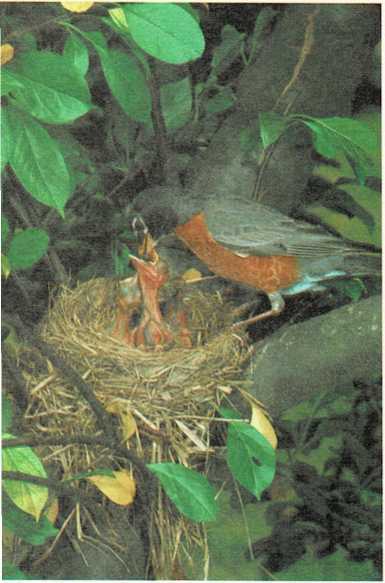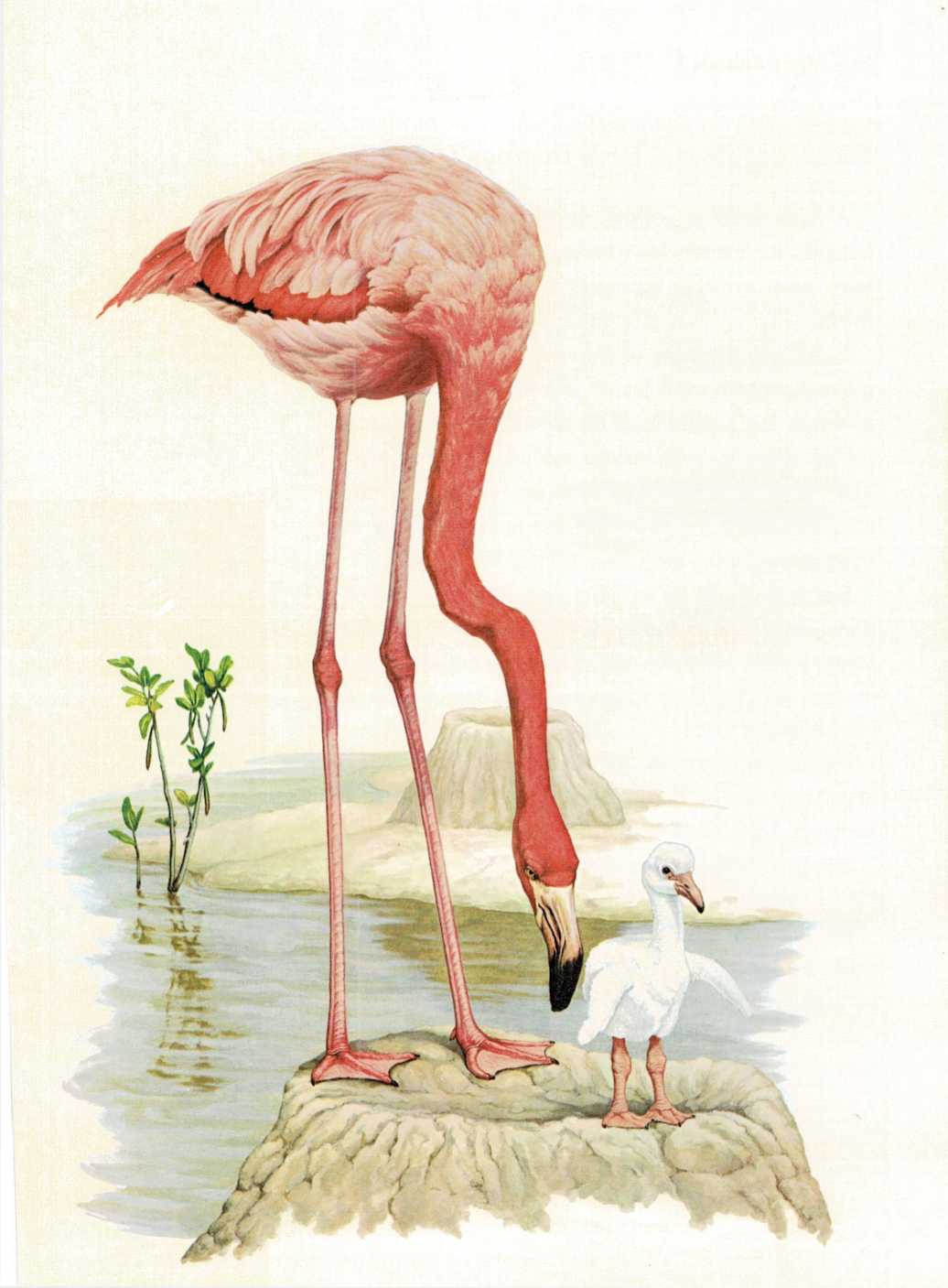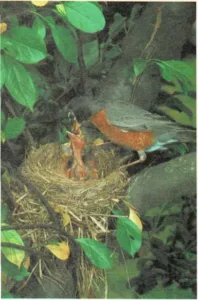
Robins
Baby robins are weak and helpless. Their parents have to feed them.
Baby birds
Some baby robins lie close together in a nest. Their eyes are closed.
They have no feathers. They can’t stand on their tiny, weak legs.
With a flutter of wings the mother robin lands on the nest. In her bill
is a wiggling worm. At once, each baby’s mouth opens wide. “Me! Me! Give
it to me!” each open mouth seems to be saying.
The mother pushes the worm into a mouth and flies away. She’ll be back
soon with another worm or insect. Then another baby bird will have its
turn to eat.
On a pile of grass near a river are some baby ducks. They are different
from the robins. The little ducks have fuzzy feathers. Their bright eyes
are wide open. And when their mother quacks, they follow her out of the
nest. All in a row they waddle to the river for a swim.
Some kinds of birds, such as robins, blue jays, and nuthatches, are
helpless for several weeks after they hatch. But other kinds of birds,
such as flamingos, ducks, chickens, and geese, can see and walk and care
for themselves soon after they hatch.

A baby flamingo leaves its nest about five days after it hatches.
Flamingos

